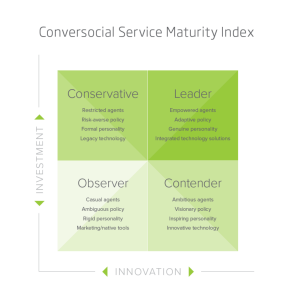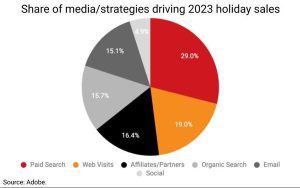by Andrew Solmssen, June 29, 2016
Companies merge—it happens. And when it does, we typically get a lot of cheery press releases touting the improved efficiency and strength of the new brand portfolio. Much less discussed (and consequently lower on the list of priorities) is what to do with all of the digital marketing properties that are suddenly living under one roof.
No matter how great a merger is for a company, it’s always a mess for the marketing and IT departments. Every digital property a brand owns needs to be thoroughly audited, from campaign pages to mobile apps—even presences on chatbots. Invariably, we find big mismatches in technologies, content types, and even the tone and design of imagery. No two brands ever make the same decision about how to spend their money and where to focus. As a result, you end up with everything from state-of-the-art commerce platforms to Flash microsites that haven’t been updated since the second Bush administration.
Unfortunately, this leaves you with two choices, neither of which is 100% wonderful. The first is to stick with the legacy systems and maintain them independently. Because this option costs less money (and certainly less work) in the short run, many companies end up making this choice.
The second is to solve the problem permanently: to make a blanket technology decision and adopt an enterprise platform that serves all brands together. If you want to see what this looks like in practice, start on the brands overview page of P&G or Gap.com, then follow the links to the different brands. If you ignore the content, you’ll see the pages themselves have a lot of structural similarity. Menus and carousels tend to be in the same places; overall formatting looks similar, and yet, each is perfectly able to support the unique identity of its brand.
Different priorities mean different levels of uniformity or variety, but the most sophisticated enterprise systems achieve scale by creating a set of themes, templates, and content.
A theme is a collection of templates for a particular type of site or page, such as brand discovery or commerce. A template is a layout designed for a particular purpose, such as a product page or search results. And a feature is an item that sits inside a page, like a video player or quiz interface. Once you create all these things, they serve as reusable building blocks that allow you to efficiently construct a large number of websites and other properties for your brands. Needless to say, this also makes it easy to add new brands to your system and support additional mergers.
Of course, adopting an overarching enterprise solution is certainly not as easy in the near term as leaving everything as it is. Commitments are scary, and you’ll need to make sure that your CTO and CMO can get on the same page to make the right choice. But once you do, the benefits are numerous:
Unified data. This one advantage is reason enough to go enterprise. While data is critical for every company, it’s even more important when you manage multiple brands. With a single platform, you can compare metrics across individual sites and look for patterns of users who visit multiple brands. That way you’ll get a richer information set about your customers and unlock cross-marketing opportunities as well.
Better creative. You might think an enterprise system reduces creativity, but having a library of features means you can implement functionality easily. Rather than reinventing the wheel, you can devote more energy to coming up with better ideas and new ways to drive traffic to the platform.
Efficiency. With a template-based system, you merely have to build functionality once and then can adapt it to a suite of properties. A store locator widget, for example, can be rolled out across brands with minimal investment.
Reduced longterm costs. Maintaining legacy systems usually means dealing with different technologies. As a result, you’ll have to manage multiple teams, often across different locations. With a single set of technologies you can significantly reduce the number of people who keep everything running and focus your investment on improving the experience and features of the site.
Relevance. Increasingly, owned digital marketing properties need to integrate with other technologies. If you can’t interoperate easily with ad tech, social platforms, distribution networks, and so on, you’re more likely to get disrupted and disintermediated. In addition, unifying your digital presence can provide a big lift in search authority and cross linking.
Stability. This may seem surprising, but it’s not. Legacy systems are often more broken than they appear. Under the microscope, they usually demonstrate that they are not just old, but non-functioning—with broken links, pages that appear strange on certain devices, and sign-up processes that get stuck in the middle. A single, new, enterprise system eliminates this problem and stays up to date as you move forward. Imagine the difference of only having one server that can go down.
In other words, while it may seem easier to kick the can down the road, you’re simply buying yourself more work, less data, and less flexibility in the future. The most forward-thinking companies realize that the sooner you bite the bullet and choose an enterprise platform, the better.
MediaPost.com: Search Marketing Daily
(25)
Report Post




